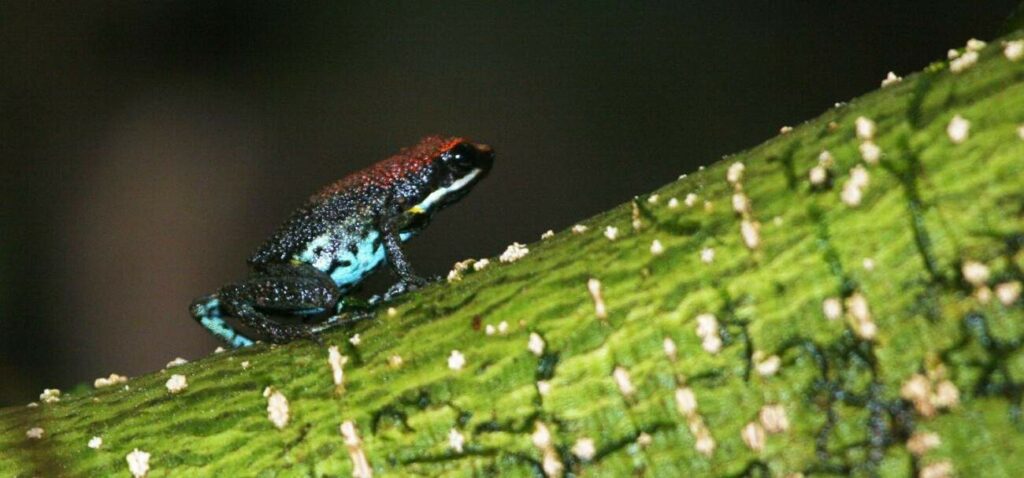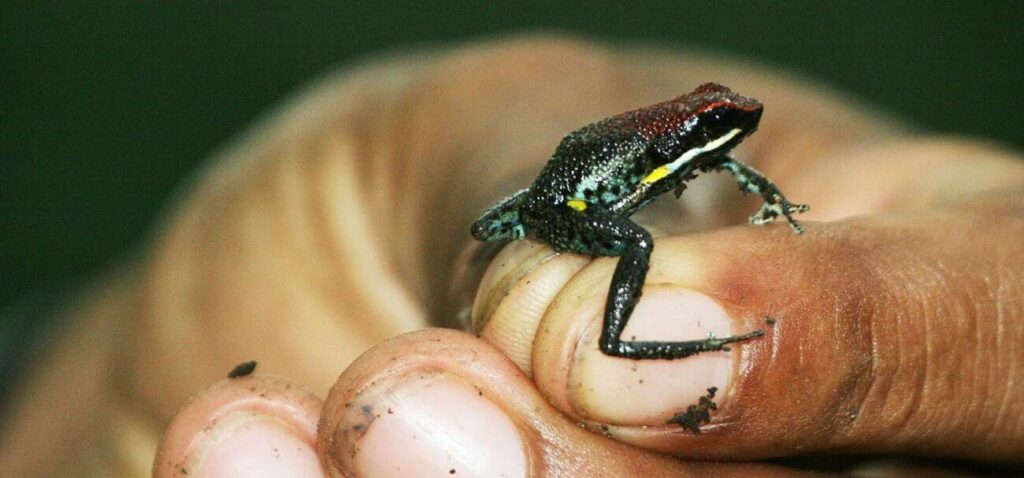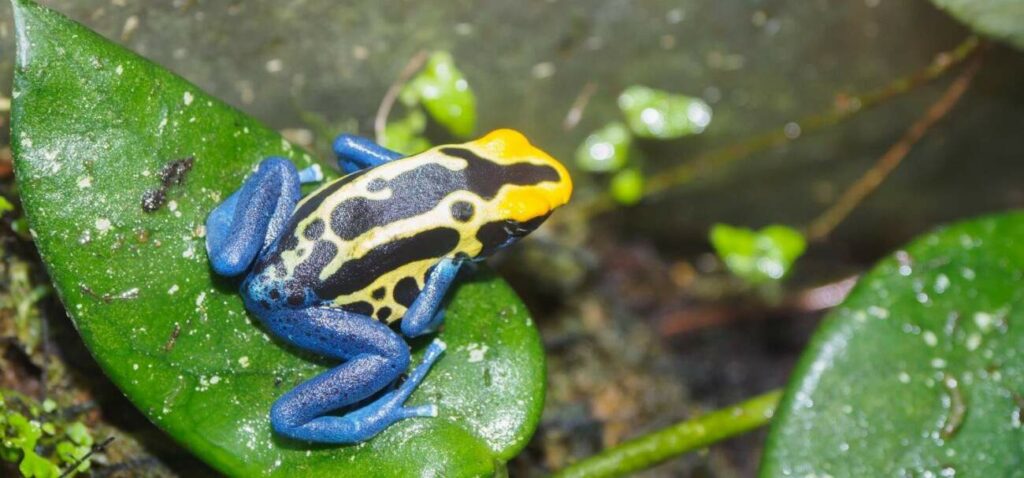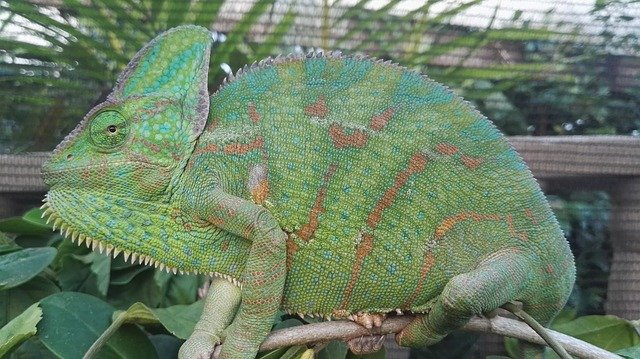Frogs are common animals and are found in most countries around the world – in fact, there are frogs on every continent apart from Antarctica, and that isn’t surprising, it would be far too cold for them.
Most frogs are not poisonous but there are a few species that are and in the main, the key giveaways are where the frog comes from and its colors. There are over 4700 species of frogs but only 100 are known to be poisonous.
When you are looking for a pet frog, the last thing you would want is to adopt a froggy friend who had the power to make you very ill. Furthermore, when you are out in the wild, you want to make sure that you do not expose yourself to frogs, or any other animals that could pose a risk to your health, or even your life.
In this article, we are going to be looking at poisonous frogs and finding out what you should look for to determine whether the frog is safe to handle or better left alone.
Why Are Some Frogs Poisonous?
Across the globe, there are more than 4700 different species of frog, yet only 100 of these are known to be toxic to humans. That is a minimal number so the chances of suffering ‘death by frog’ are low but it is still important to be aware of these animals are give them a wide berth.
Unlike other poisonous animals, snakes and spiders for example, frogs do not administer poison through a bite or venom glands. Instead, they secrete a poisonous toxin from their skin making them potentially far more dangerous.
In order to suffer poisoning from other rainforest animals, one would need to be bitten and more often than not this only happens when a animal feels threatened; they will likely bolt before the bite.
However, with poisonous frogs, it can take something as little as brushing past one and getting their secretions on your own skin.

But why are these animals poisonous? They don’t need to kill they prey with poison so there must be another reason for this.
The reason that these animals are poisonous is because of their diet. Incredibly, these frogs eat a diet that consists of many alkaloid-containing ants.
The alkaloids in these ants is highly toxic, but it doesn’t appear to affect the frogs. Amazingly, the frog is able to extract and store these toxins in special sacs under the skin and secrete them at will.
However, with the exception of one Australian frog that produces its own dermatoxin without the aid of ants, frogs that are kept in captivity will not be poisonous. This is simply because their owners will not feed them a diet that is conducive with creating poison – so they won’t harm you.
Where Do Poisonous Frogs Live?
As we have mentioned, poisonous frogs inhabit all but one of the continents but fortunately, the location of the poisonous species is not as widespread.
In the main, these toxic animals are found throughout South America and some of Central America where there is a tropical climate. However, fly across the ocean and you will also find some poisonous species in Africa, particularly on the island of Madagascar.

How Toxic Are Poisonous Frogs To Humans?
If you happen to be ambling through the rainforests of South America or trekking through Africa, then there is a chance that you may come across a poisonous frog. This might be a great photo opportunity but you certainly won’t want to get any of those toxins on your skin.
The level of threat that these frogs pose will vastly depend on the species with some frogs doing nothing more than giving you some localized inflammation and numbness whereas others have enough poison to paralyze or kill you.
One particular species known as the golden poison frog (Phytoblates terribilis) has enough potent poison to take out up to 12 humans – better to avoid these if you were to ever visit the Pacific coast of Columbia where they are native.

But what might surprise you even more about these tiny creatures is that one dose of their poison would be enough to kill off two African bull elephants!
How To Tell If A Frog Is Poisonous
With so many species of frog across the world, and so few that are poisonous to humans, it might feel like a game of Russian Roulette when it comes to handling frogs in the wild.
Of course, the most sensible thing to do is to avoid touching any wild animal; both because it eliminates the risk of being hurt but will also prevent you from stressing the animal out.
However, if you are out and about in a tropical region or you are worried about adopting a potentially poisonous pet.
One of the first signs that a frog might not be safe to touch is its colouring. In the wild, bright colours alert predators that this isn’t an animal that they want to prey on.
Being on the smaller side, frogs are susceptible to becoming a meal if they do not have adequate protection. They may become dinner for a variety of animals including small mammals, lizards, and snakes, amongst others. However, their bright colors are a way of saying ‘I’m dangerous – don’t eat me!’

The problem is that these gorgeous colored frogs are so beautiful that they can often lull wildlife-loving humans into a false sense of security and lure them in with their bright colors. But don’t be fooled, whilst they may be one of nature’s most glorious-looking creatures, they could serve as a threat.
However, not all colorful frogs are poisonous. There are some species who cleverly mimic the patterns and colors of their toxic cousins as a way to cheat death and avoid being the prey of a larger animal, and it works. That being said, you should avoid touching any frog that is brightly colored just to be on the safe side.
Can I Keep A Poisonous Frog As A Pet?
It may surprise you to learn that poisonous frogs have been being kept as pets for many years, and nobody has gotten hurt. But how is this?
Remember we talked about the diet of the frogs being the cause of their poison? If you breed a frog in captivity and feed it foods that do not contain alkaloids, they cannot produce toxic secretions and are perfectly safe to keep in the home.
Conclusion
There are thousands of species of frogs that live all around the world and a small handful of these are poisonous. This is as a result of their diet with some species feeding on alkaloid-containing ants that allow them to secrete poison from their skin.
This poison varies in terms of how dangerous it is to humans with one species being able to kill several people with one hit.
These poisonous frogs can be identified in two ways; primarily, if they are from Africa or South America, there is a high chance that they could be unsafe.
Furthermore, you should look at the frog’s coloring; poisonous frogs tend to be brightly colored and this serves as a way to warn potential predators that they are not safe for eating.




